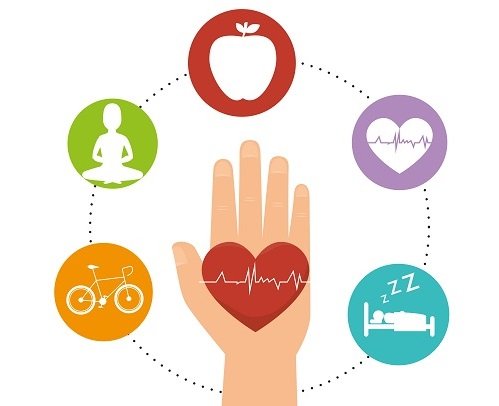The Connection Between Meditation and Reduced Blood Pressure

Updated at: 2023-08-05 23:46:16 (2 years ago by Melkisedeck Leon Shine)
The Connection Between Meditation and Reduced Blood Pressure
🧘♂️✨
As AckySHINE, I am excited to dive into the fascinating topic of meditation and its connection to reduced blood pressure. Meditation has been practiced for centuries and is known for its numerous mental and physical health benefits. One of the most notable benefits is its ability to reduce high blood pressure, a condition that affects millions of people worldwide. In this article, we will explore the science behind this connection and how you can incorporate meditation into your daily routine to promote a healthier heart and mind.
-
Meditation is a practice that involves training the mind to focus and redirect thoughts. With regular practice, it can help individuals achieve a state of deep relaxation and tranquility.
-
Numerous studies have shown a positive correlation between meditation and reduced blood pressure levels. 📚
-
One study conducted by the American Heart Association found that meditation can lead to a significant reduction in both systolic and diastolic blood pressure. This reduction is comparable to the effects of medication prescribed for hypertension. 💊
-
Meditation activates the body's relaxation response, which helps to counteract the effects of chronic stress. When we are stressed, our blood vessels constrict, leading to increased blood pressure. Meditation helps to relax the blood vessels, promoting better blood flow and reducing pressure on the arterial walls. 💆♀️💆♂️
-
Another way meditation reduces blood pressure is by improving heart rate variability. Heart rate variability refers to the variation in time intervals between heartbeats. Higher heart rate variability is associated with better cardiovascular health, while low heart rate variability is linked to an increased risk of heart disease. Regular meditation has been shown to increase heart rate variability, thus promoting a healthier heart. ❤️
-
Stress often triggers unhealthy behaviors such as overeating, smoking, or excessive alcohol consumption, which can all contribute to high blood pressure. By reducing stress levels, meditation can help individuals manage these behaviors and make healthier choices. 🚭🍷
-
As AckySHINE, I recommend starting with just a few minutes of meditation each day and gradually increasing the duration as you become more comfortable. There are various meditation techniques to choose from, including mindfulness meditation, transcendental meditation, and loving-kindness meditation. Find the one that resonates with you and commit to practicing it regularly. 🗓️
-
Consistency is key when it comes to reaping the benefits of meditation. Aim for at least 10-15 minutes of meditation every day to experience the positive effects on blood pressure. 🌟
-
Incorporating meditation into your daily routine can be as simple as finding a quiet space, sitting comfortably, and focusing on your breath. You can also use guided meditation apps or join meditation classes to enhance your practice. The important thing is to find a method that works for you and stick with it. 🧘♀️📱
-
It is important to note that while meditation can be a valuable tool in managing blood pressure, it should not replace medical treatment or medication prescribed by a healthcare professional. Always consult with your doctor before making any changes to your treatment plan. 👩⚕️🩺
-
In addition to helping reduce blood pressure, meditation has also been shown to improve overall mental well-being. It can reduce symptoms of anxiety and depression, enhance focus and concentration, and promote a sense of inner peace and happiness. 🌈😊
-
As AckySHINE, I urge you to prioritize self-care and make meditation a part of your daily routine. The benefits extend far beyond just reducing blood pressure, and you will likely notice improvements in other aspects of your life as well. 🌟
-
If you find it challenging to incorporate meditation into your busy schedule, try integrating it into your daily activities. You can practice mindfulness while walking, washing dishes, or even during your morning commute. The key is to bring your attention to the present moment and cultivate a sense of calm and awareness. 🚶♀️🧼🚆
-
Remember, meditation is a journey, and it is normal to have ups and downs along the way. Be patient with yourself and celebrate even the smallest successes. Each moment of stillness and peace that you cultivate through meditation is a step towards a healthier, happier you. 🌱🌺
-
As AckySHINE, I would love to hear your thoughts and experiences with meditation and its impact on blood pressure. Have you tried incorporating meditation into your daily routine? What benefits have you noticed? Share your journey in the comments below! 🌟✨
In conclusion, the connection between meditation and reduced blood pressure is well-established. By incorporating regular meditation into your life, you can experience the many physical and mental health benefits it offers. Start small, be consistent, and enjoy the journey towards a healthier heart and mind. 🧘♀️💓
🌻🌞🌈 Remember, AckySHINE is here to help you shine bright! 🌟✨







